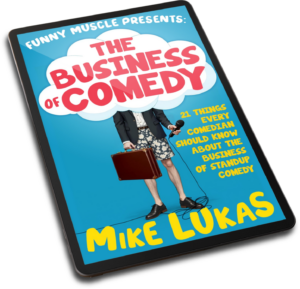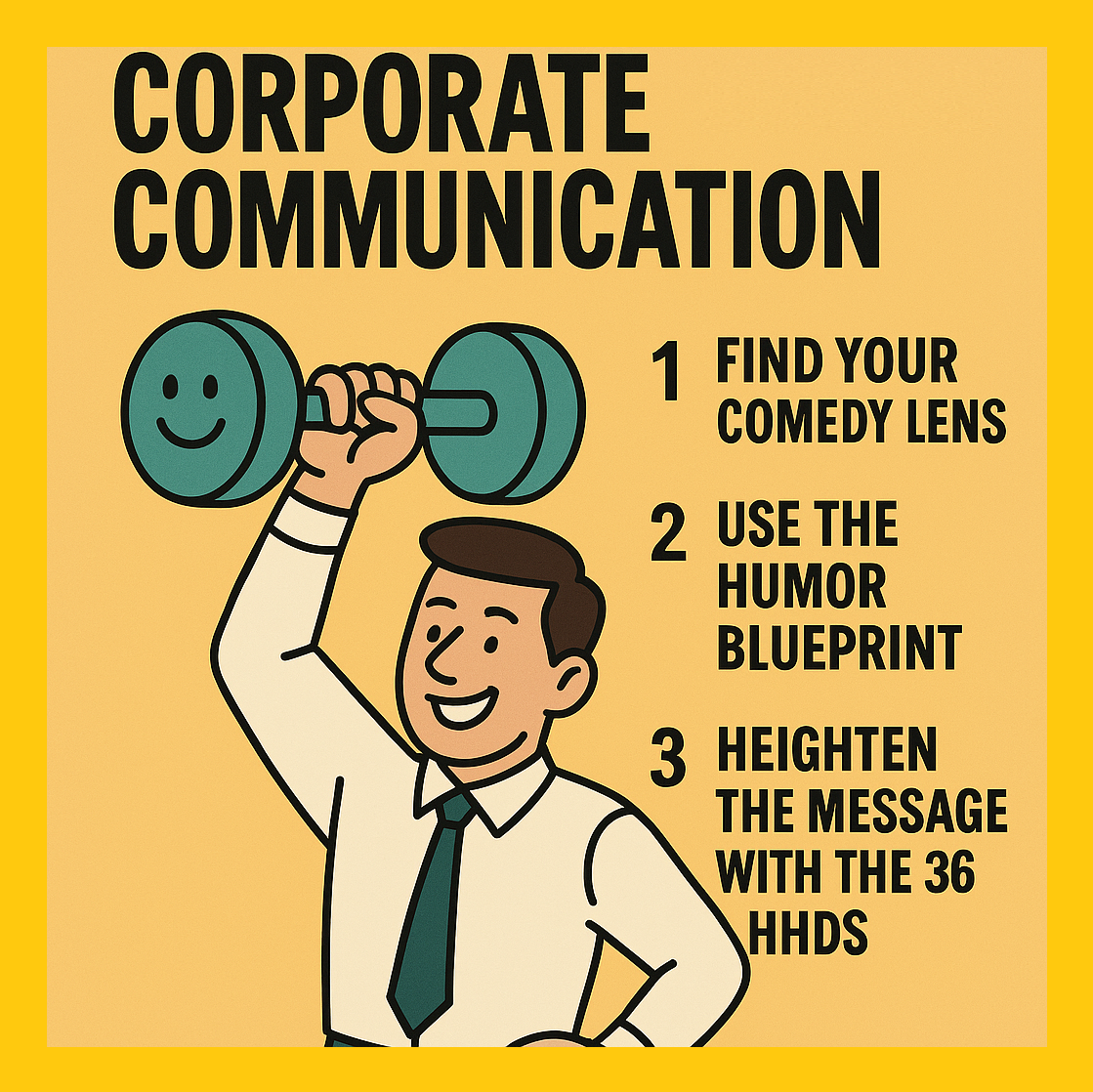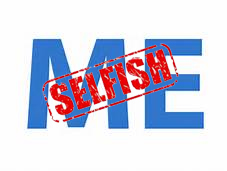Let’s face it: most corporate communication has the emotional range of a spreadsheet. It’s jargon-laced, over-edited, and about as memorable as the fifth bullet point in a PowerPoint presentation about quarterly alignment initiatives.
But it doesn’t have to be that way.
Comedy isn’t just for the stage—it’s a masterclass in connection. And whether you’re leading a Zoom meeting, writing an email, or pitching a big idea, you can learn a lot from how comedians craft their jokes. In fact, with the Funny Muscle Methodology, you can strengthen the way your team communicates, builds rapport, and even handles conflict.
So let me introduce you to the toolbox.
Step 1: Find Your Comedy Lens
Translation: Know your POV.
Every great comedian has a Comedy Lens—a unique, emotionally honest perspective that colors everything they say. In the workplace, this is your authentic voice—your leadership style, your vibe, your default way of seeing problems.
A CEO might have a “calm coach” lens. A team leader might operate from a “chaotic inventor” lens. A marketing director might be a “strategic skeptic.”
Understanding your lens helps you:
- Deliver clearer messaging.
- Cut the corporate fluff.
- Say things in a way people actually hear and remember.
ACTION STEP: Identify your communication lens by asking: What emotional filter am I unconsciously applying to most work situations—and does it help or hinder connection?
Step 2: Use the Humor Blueprint
Translation: Structure your ideas like a joke.
The Humor Blueprint has four parts:
- Premise (emotion + topic)
- Setup (neutral lead-in)
- Unspoken Norm (what the audience expects)
- Punchline (the twist)
In business terms, it’s the difference between “We had a 12% drop in retention” and “I knew we had a retention problem when even our AI quit.”
The setup creates logic. The punchline delivers clarity and surprise.
ACTION STEP: Before sending your next all-staff memo, try writing your point as a setup–punchline. You don’t have to go for laughs. Just go for memorable.
Step 3: Heighten the Message with the 36 HHDs
Translation: Say it smarter, sharper, and with a twist.
Comedians use 36 Humor Heightening Devices to make ideas funnier, stickier, and more effective. And every single one can be used to improve workplace communication. Here are five that translate especially well:
- Contrast: Highlight opposites. (“This time last year we were begging for engagement. Now we’re swimming in Slack messages.”)
- Metaphor: Make abstract ideas visual. (“Our onboarding process is like IKEA furniture: confusing instructions, missing pieces, and somehow still satisfying when done.”)
- Sarcasm: When used gently, it adds levity to dry updates. (“Apparently we need 14 meetings to approve one Google Doc.”)
- Understatement: Great for humility in leadership. (“We had a small hiccup. As in… we accidentally deleted the Q3 sales dashboard.”)
- Problem Solve: Show creativity by imagining absurd fixes. (“What if we just pretend we’re a startup and wear hoodies until morale improves?”)
Using these tools helps you say important things in a way that sticks, even when the subject matter isn’t funny.
Bonus: Comedy Builds Trust
When someone makes you laugh at work, what are you really thinking?
- They’re sharp.
- They’re human.
- They get it.
Humor—even subtle humor—breaks down hierarchy, eases tension, and turns transactional teams into collaborative ones.
When applied with purpose, the Funny Muscle Method makes you a better communicator not because you’re trying to be a stand-up comic, but because you’re thinking like one:
- What’s my take?
- Who’s my audience?
- What’s the cleanest, most surprising way to say this?
Final Thought
We don’t need more memos.
We need more moments of clarity.
And if that clarity comes wrapped in a chuckle, a metaphor, or a slightly exasperated tone about Slack updates at midnight? Even better.
Communication is an art. So start training your funny muscle—even if you’re wearing a tie while doing it.
If your team could use help cutting the jargon, finding their voice, or just remembering they’re allowed to be human at work—
I coach leaders and teams on how to flex their funny muscle.
Let’s talk. (No PowerPoint required.)
Get your FREE copy of The Business of Comedy!
21 Things Every Comedian Should Know About the Business of Standup Comedy

Includes:
- How Comedians are 5-Tool Players
- How to Attract a Following
- How to Get Bookings
- How to Create Multiple Income Streams
- Manager vs Agent
- And More!





